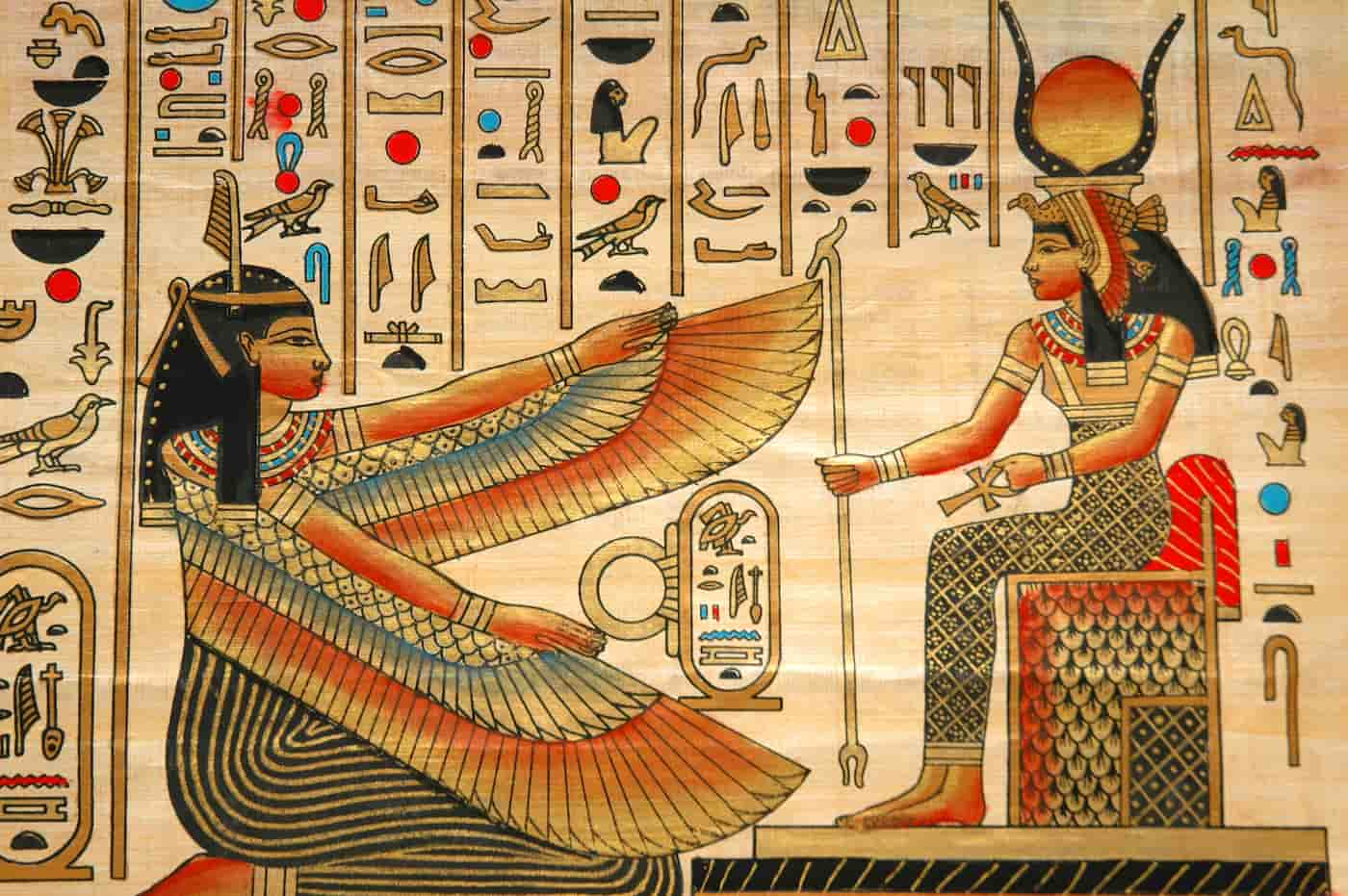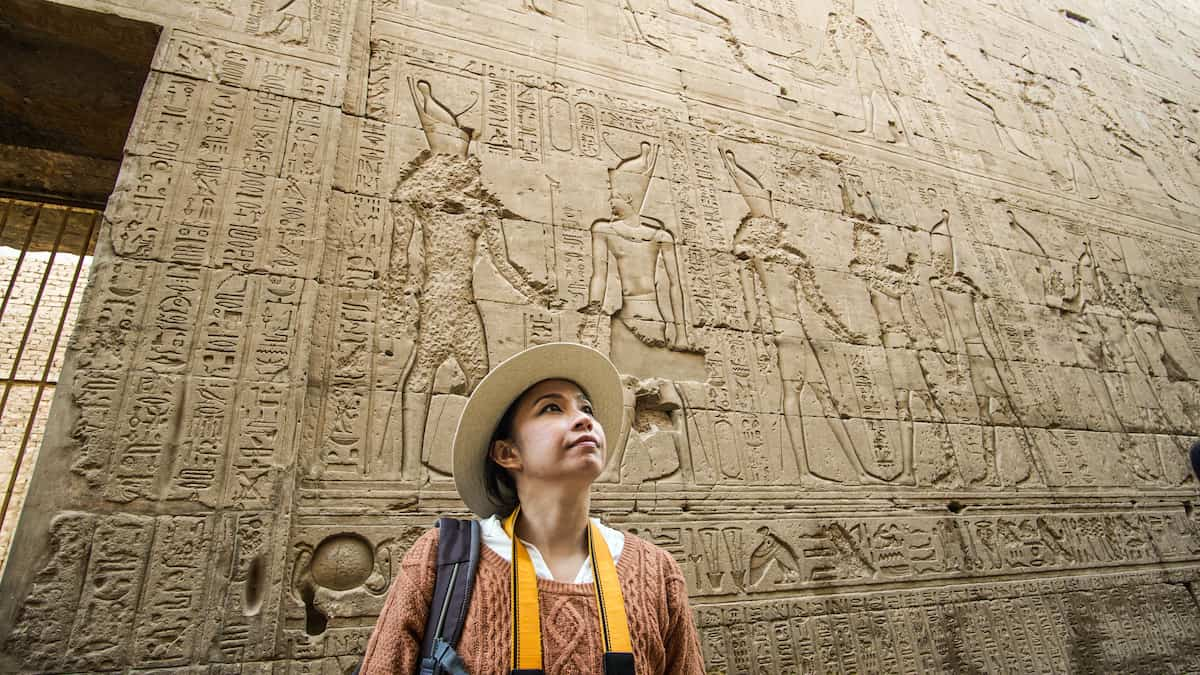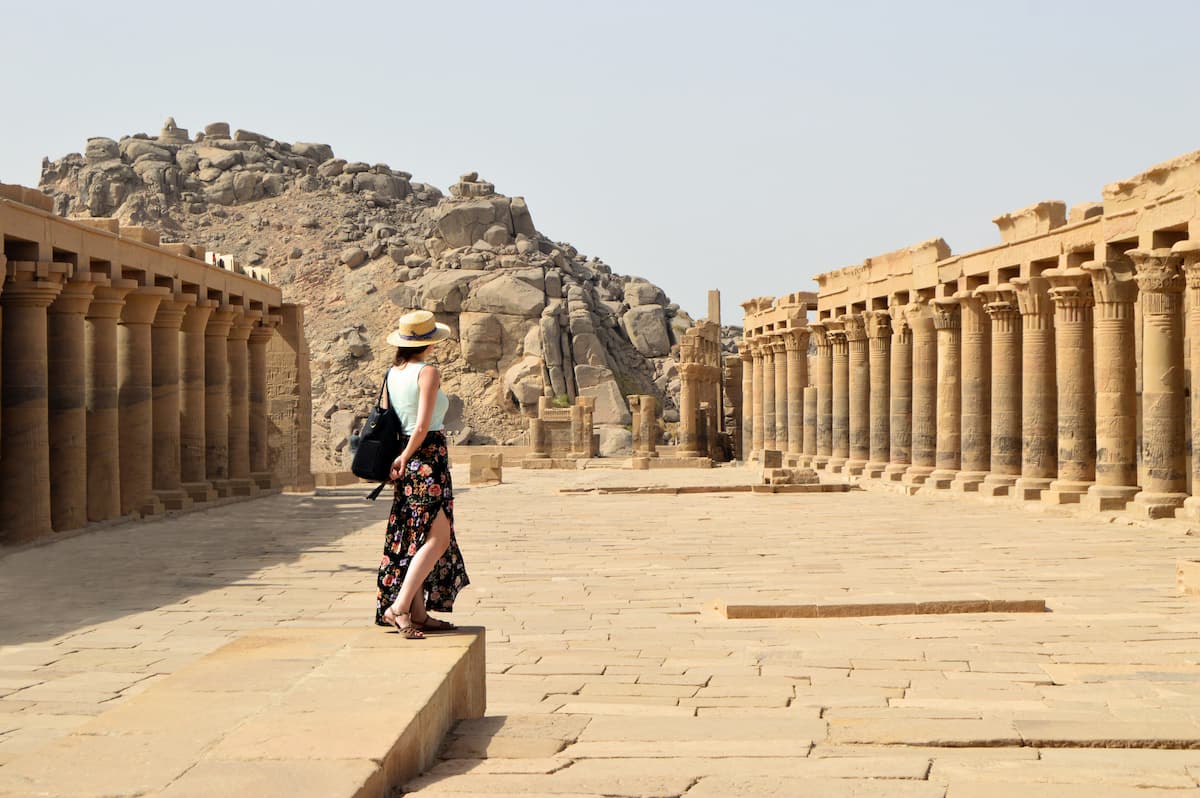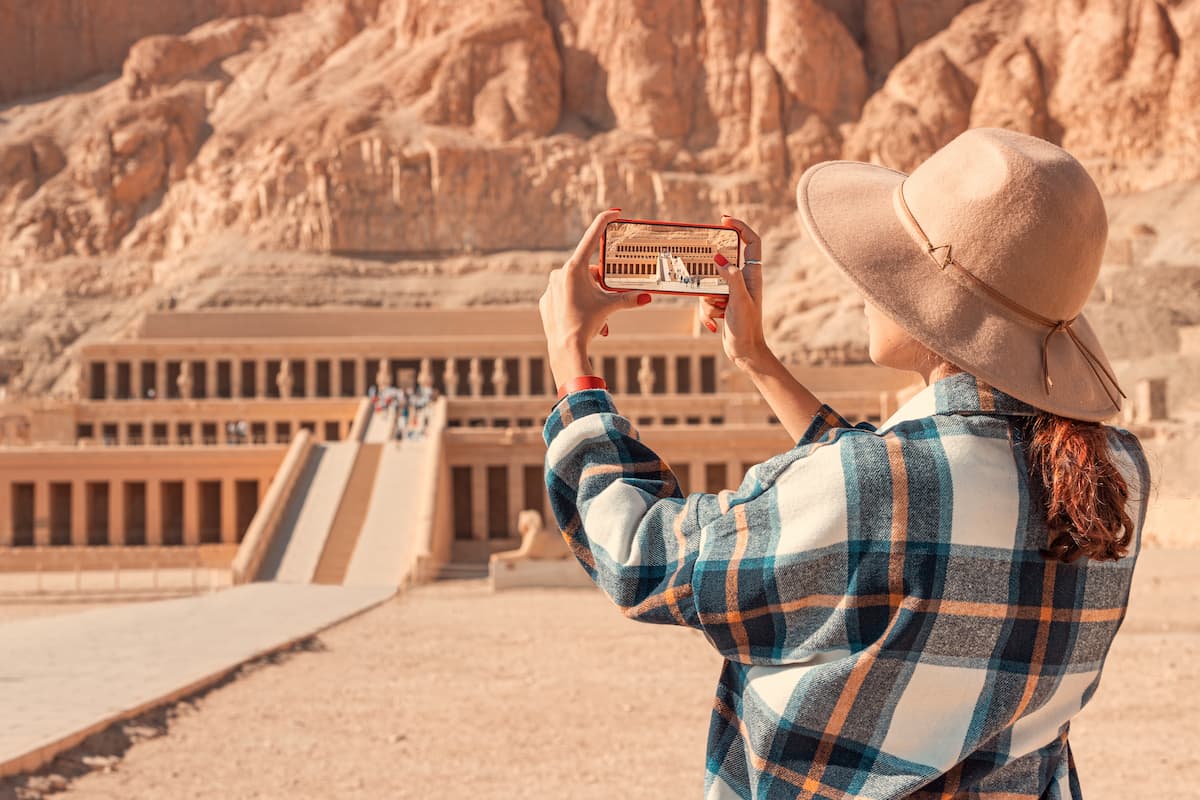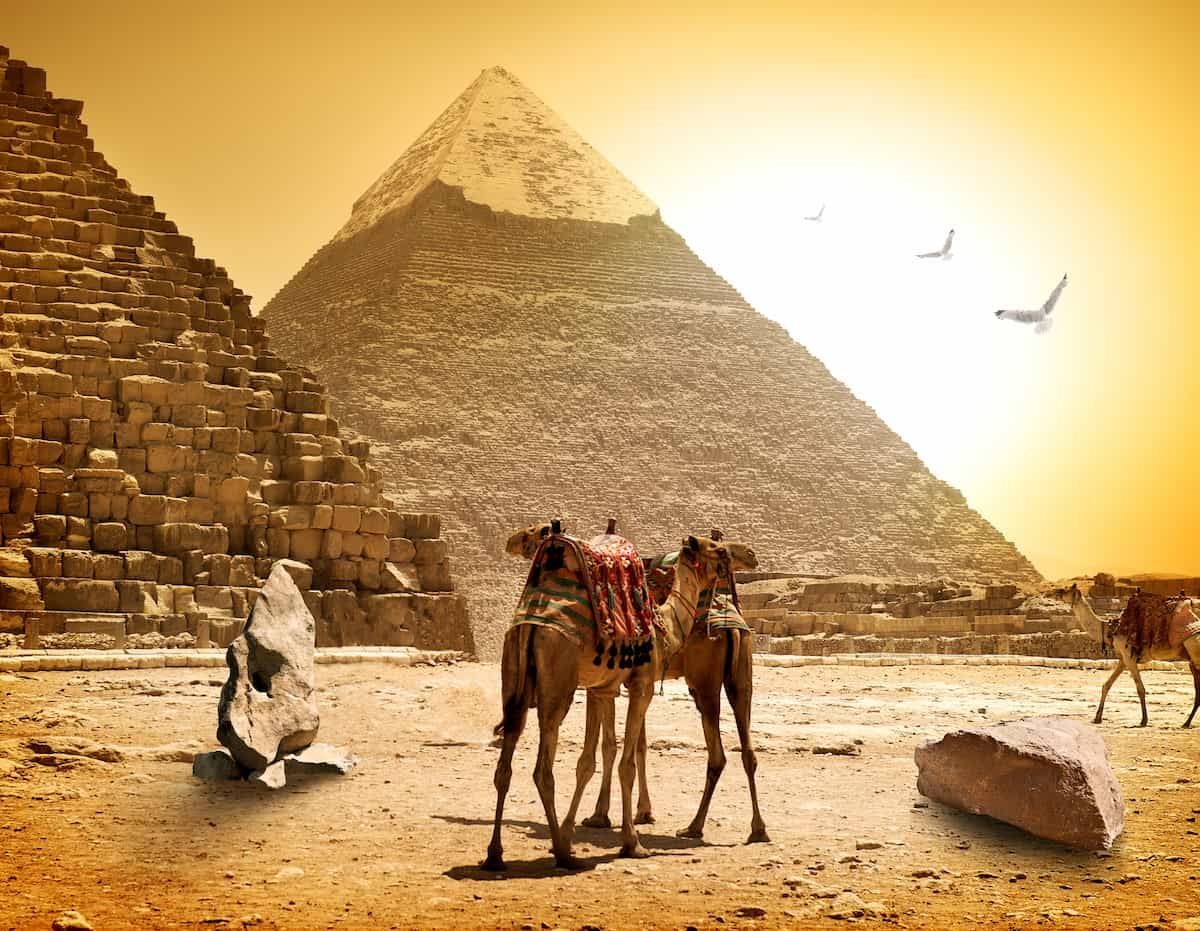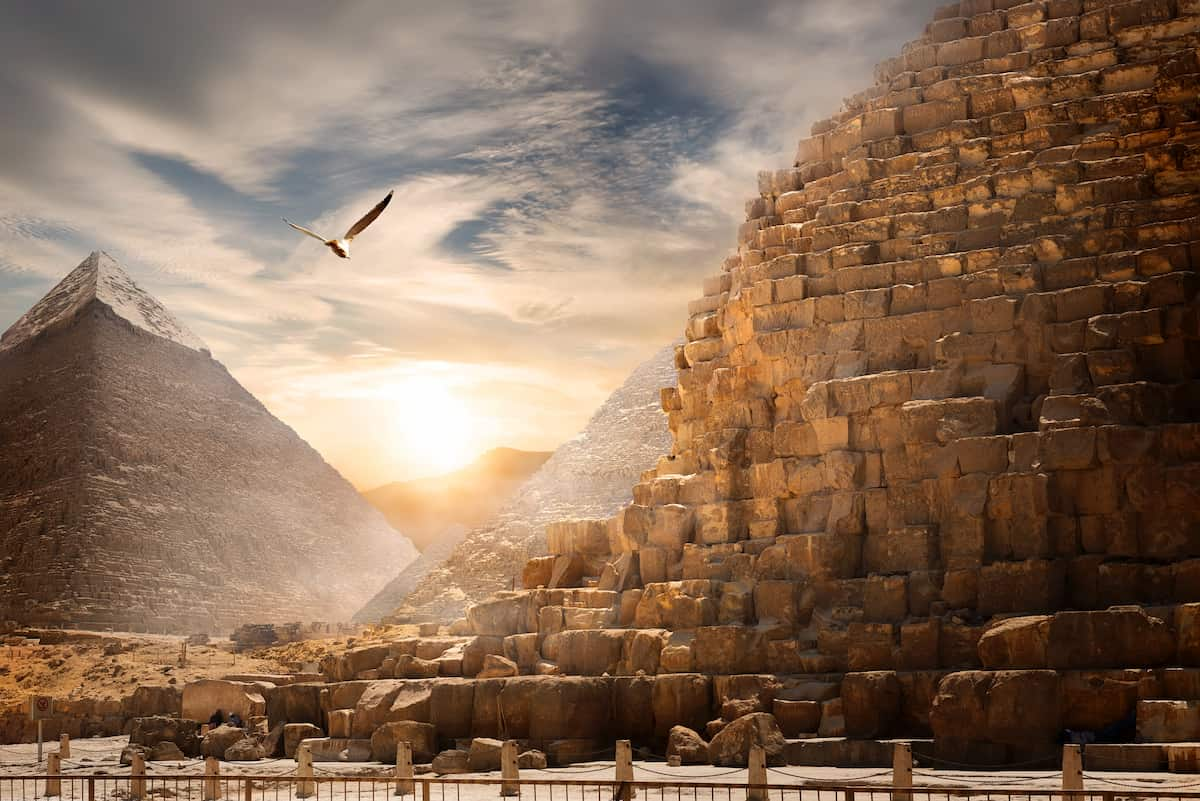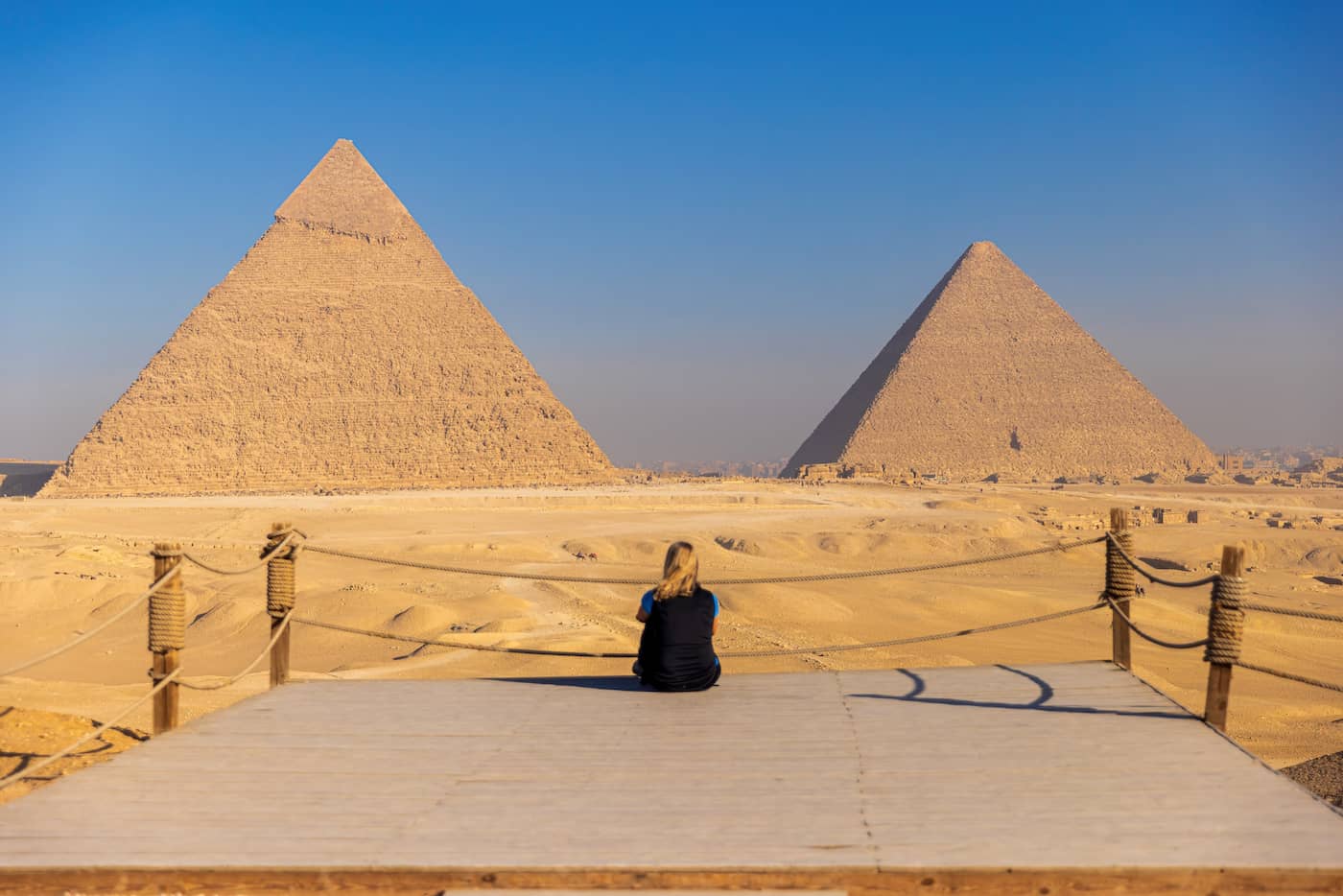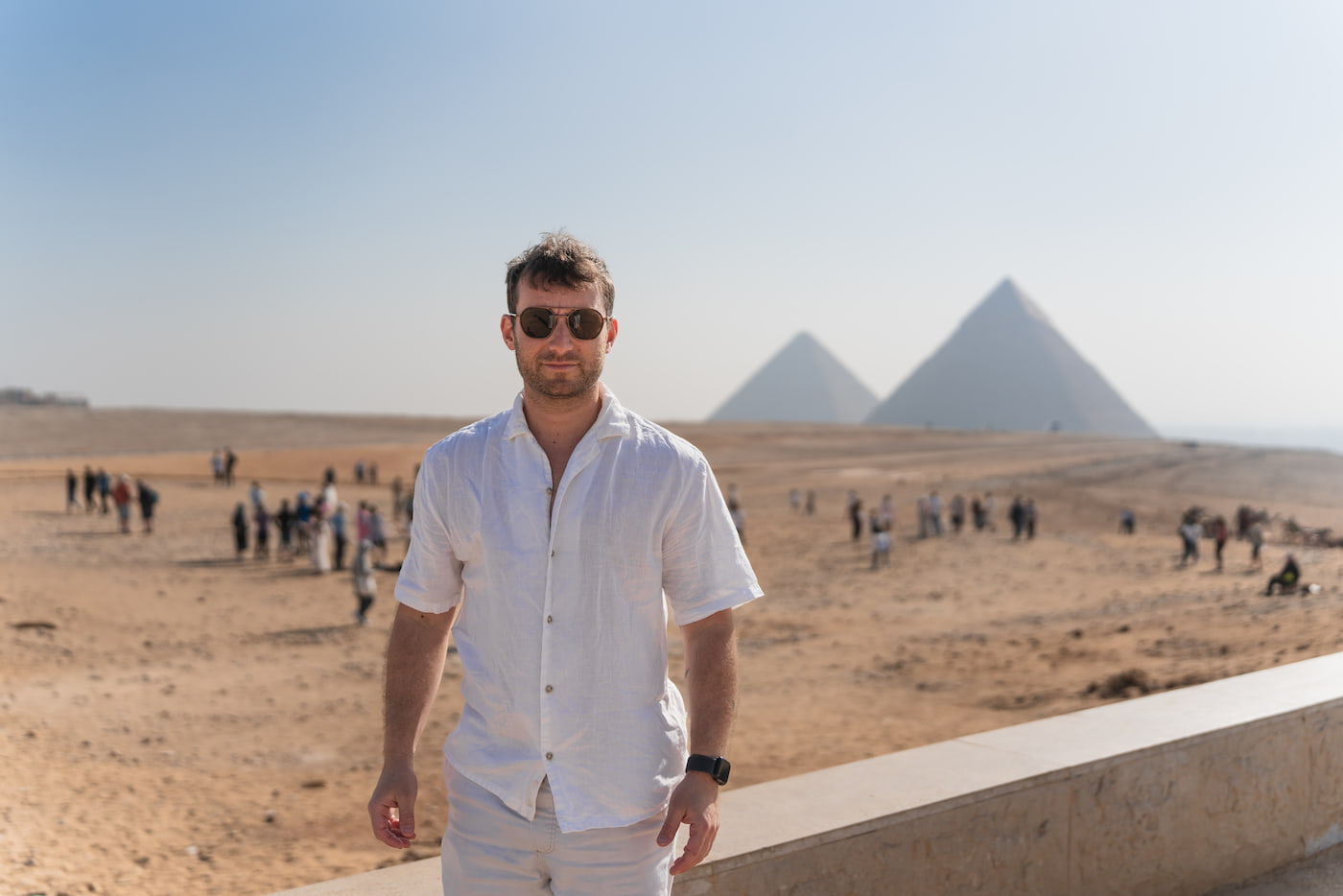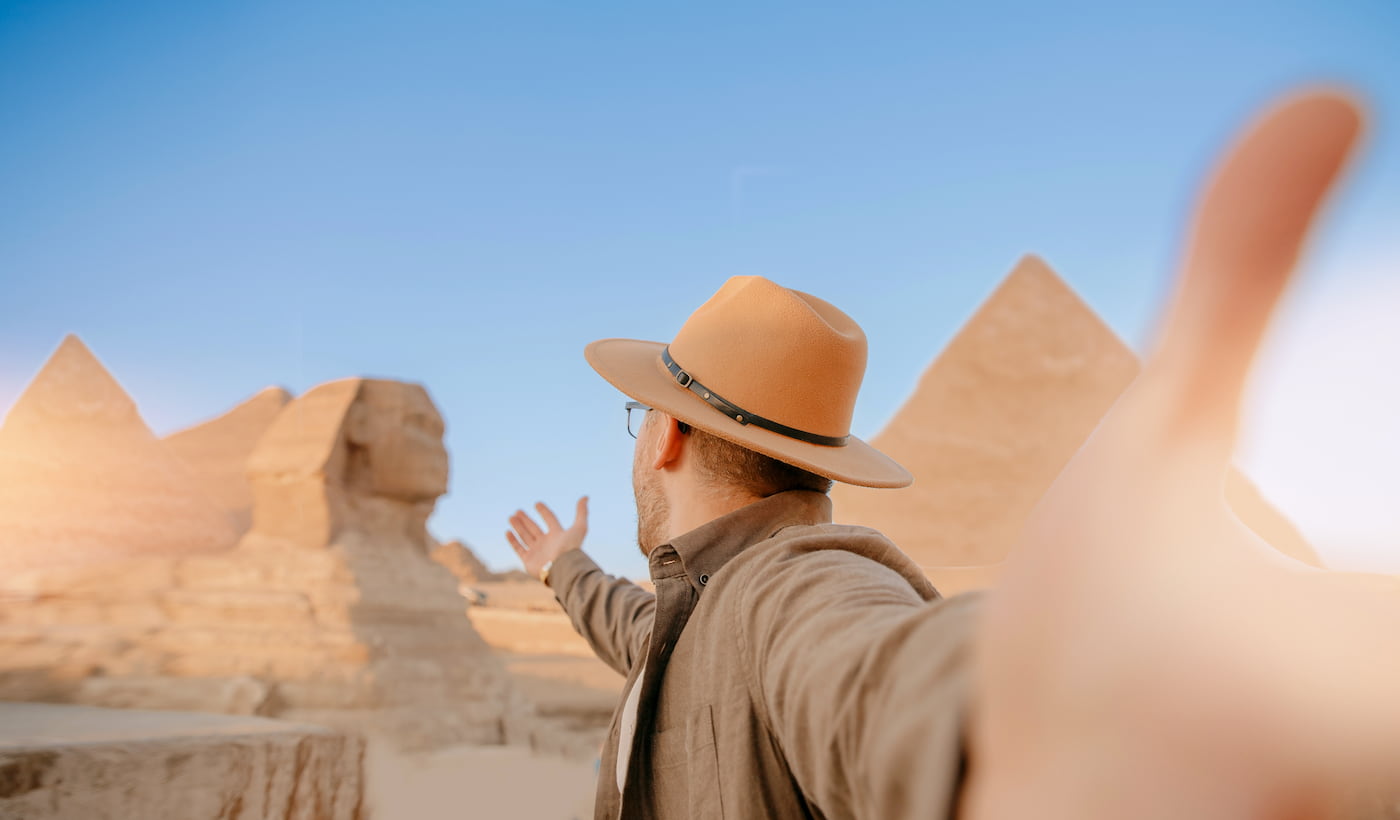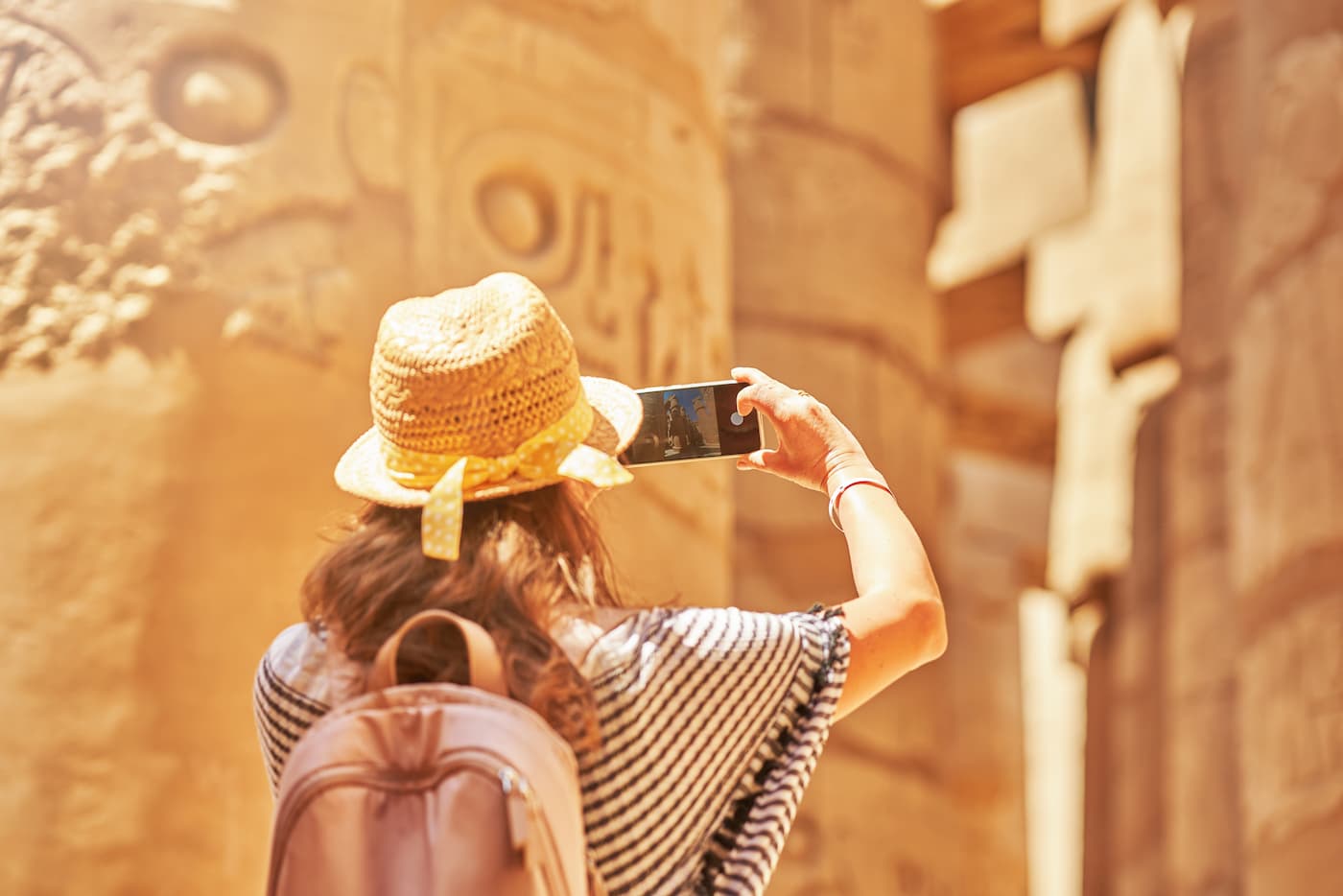Top Ancient Egyptian Myths That Still Fascinate the World
In this blog, we will take a deep look at ancient Egyptian myths from a different perspective. Step back in history and redeem Ancient Egyptian mythology, where mythology served not only for entertainment but also for religion, culture, and identity. The weak Old Egyptians would create strong myths explaining the making of the world, the course of the sun, the mystery of death, and the order of life. These stories comprise mighty gods and graceful goddesses, with their powers and symbolic roles in the formation of the balance of existence.
The Egyptian stories, from the tragic account of Osiris and Isis to the burning anger of the Eye of Ra, still catch the fancy of folks the world over. Whether your interest lies with the magic of gods, the wisdom of goddesses, or the battles between order and chaos, it is through these ancient Egyptian myths that we discover a civilization viewing the world as a subtle balance between life, death, and divinity.
In this blog, we will talk about the major myths that have fascinated readers up to the present day—the ones standing through time to inspire works of literature, films, and esoteric thoughts. So are you ready for the deepest dive into Egyptian mythology to meet those who once ruled along the Nile and beyond?
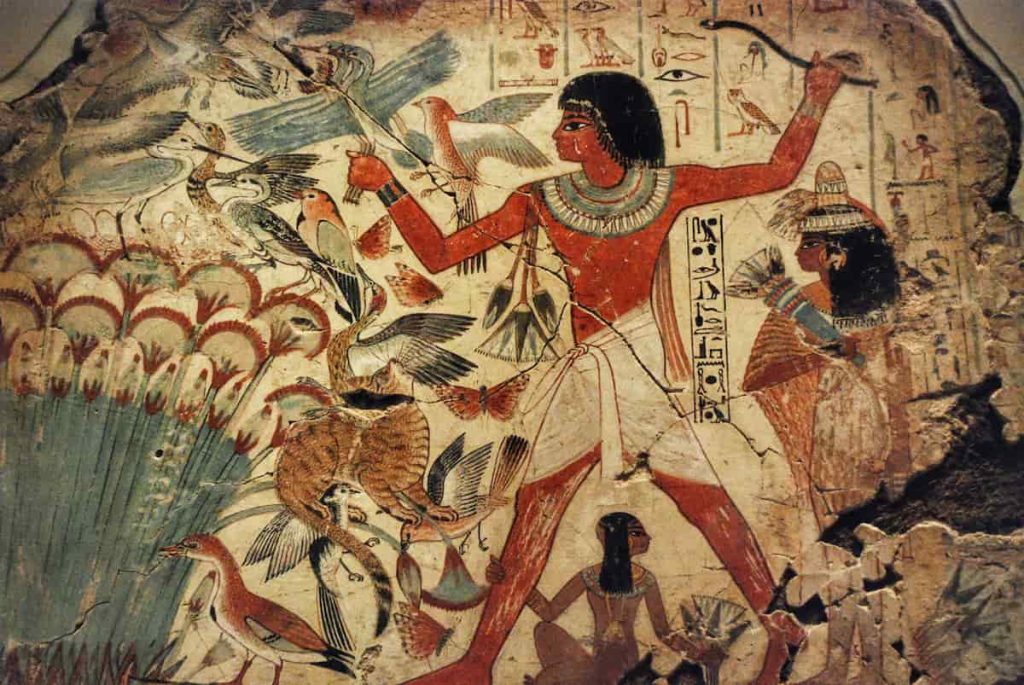
1. What Are Ancient Egyptian Myths?
The myths of Ancient Egypt are fables that depict the beliefs, values, and imagination of its people. But myths were much more than just stories; they were the foundation of Egyptian mythology. Moreover, upon which various explanations could be built by the ancient Egyptians in order to comprehend the universe around them. In addition, the creation of the universe, life on earth, and the journey after death. The gods were mighty and illustrious, while the goddesses were truly wise and endowed with particular characteristics; together, they decided the fate of men and gods.
In these myths, the forces of good and evil contended against each other in the quest for equilibrium, symbolized through tales such as Horus versus Set or the rebirth of Osiris. Egyptian mythology served to explain natural events, the rising sun, the flooding of the Nile, stars above the evening sky, and provided laws concerning ethical conduct, the afterlife, and worship of gods.
Mythology, with its framework through temples, rituals, and hieroglyphs, has served for thousands of years to transmit the culture, art, and religion of ancient Egypt. To date, these myths continue to inspire wonder in humanity, offering a hint into the spiritual and symbolic core of Egyptian civilization.
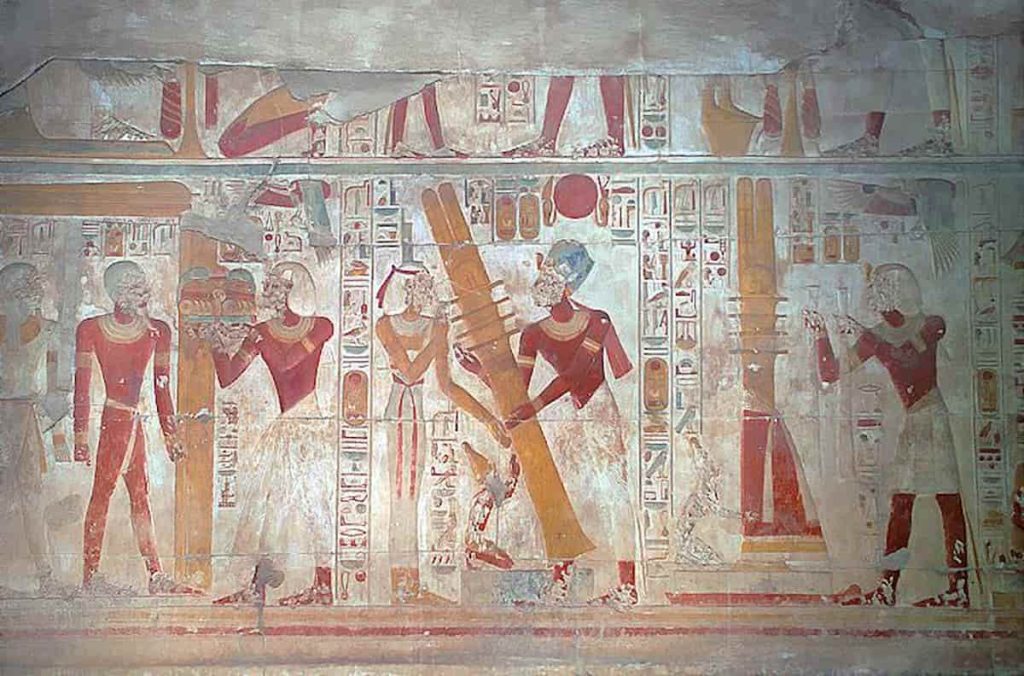
2. The Role of Gods and Goddesses in Egyptian Mythology
Ancient Egyptians worshipped gods and goddesses who held sway over natural phenomena. The mythologies were built upon considerations of various gods, each endowed with specific responsibilities and relations to natural forces, emotions, or aspects of human life. It could be anything from Ra as the sun god to Isis as the goodwill-wielding mother. The legends were the basis of numerous myths transmitted through time. Moreover, the gods were believed to impact the world at large: the flooding of the Nile or the journey of the soul after death. Pharaohs were considered to be the living gods, charged with keeping the balance and harmony.
Every god had a specific function; thus, Osiris ruled the land of the dead, whereas Hathor was a symbol of happiness and beauty. Their stories were full of magic, love, betrayal, and rebirth, the very values that provided ancient Egyptians with direction and consolation. These myths explained the inexplicable and gave meaning to life and death. Even today, Egypt‘s rich mythology has served as a huge spur for art, literature, and spirit. By understanding these divine characters better, we begin to unlock the values and beliefs behind this great civilization.
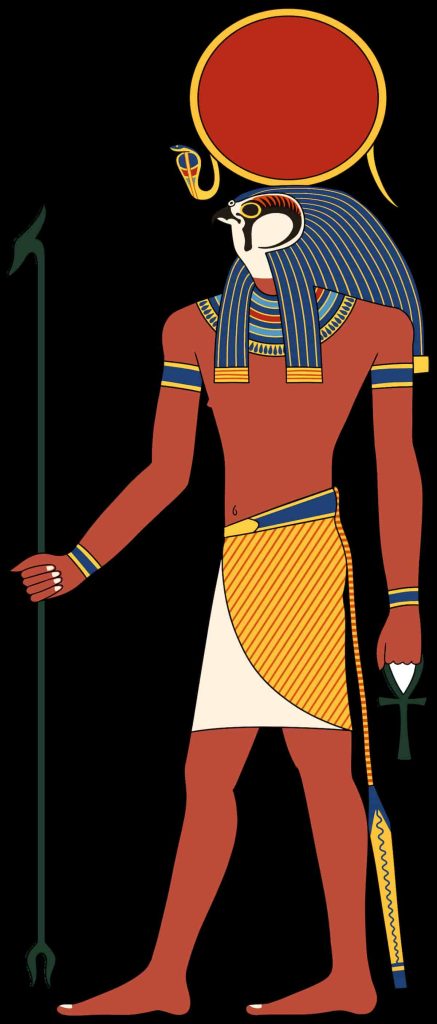
3. Creation Myths in Ancient Egypt
One of the most interesting areas of study in ancient Egyptian mythology offers a deep insight into how the common people of Egypt used to believe the world began. The myths narrate a time before time where only the dark, endless waters of Nun covered the universe. From this void of disorder, the first gods came out to build the earth. In one story, Atum rose from the watery depths to create a first set of divine beings, Shu (air) and Tefnut (moisture), who would bring forth Geb (earth) and Nut (sky). Other Creation Stories concentrate on different deities such as Ptah, who conjured the world into being, or Khnum, a ram-headed god who sculpted humans on his potter’s wheel.
All iterations, therefore, embodied ancient Egyptian values and beliefs—especially the idea of order (Ma’at) triumphing against chaos. The myths were not mere stories but considered sacred truths that were passed on by temples and through text and art. The gods and goddesses involved in the creation stories were worshipped and honored for their life-giving roles. Today, these Egyptian myths still mesmerize readers and scholars, keeping the essence of ancient Egypt alive through the retelling power of great mythology.

4. The Legend of Osiris, Isis, and Horus
One of the most stellar legends is that of Osiris, Isis, and Horus. It tells about Osiris, the wise king of Egypt, who was loved by all his subjects as well as by the gods. Set, jealous of his brother, Osiris, had his remains scattered across the land. Osiris‘s wife, Isis, the most revered goddess in Egyptian mythology, searched for the pieces and put him back together, bringing him magically to life long enough to father Horus. Subsequently, Horus was secretly raised and then, having grown stronger, confronted Set in a furious war for his father’s throne.
This ancient cosmic myth speaks of the eternal conflict between good and evil, order and chaos. It also lays down the basis for the Egyptians’ concept of death and rebirth, as Osiris is named ruler of the underworld, escorting souls into the afterlife, thus setting the cosmic stage of justice, family, and divine right, which are every bit as central to Egyptian mythology. Propelled by the mighty Isis and the valor of Horus, this legend is a living testament to hope and resurrection throughout the lands of the ancient gods, goddesses, and ageless myths.
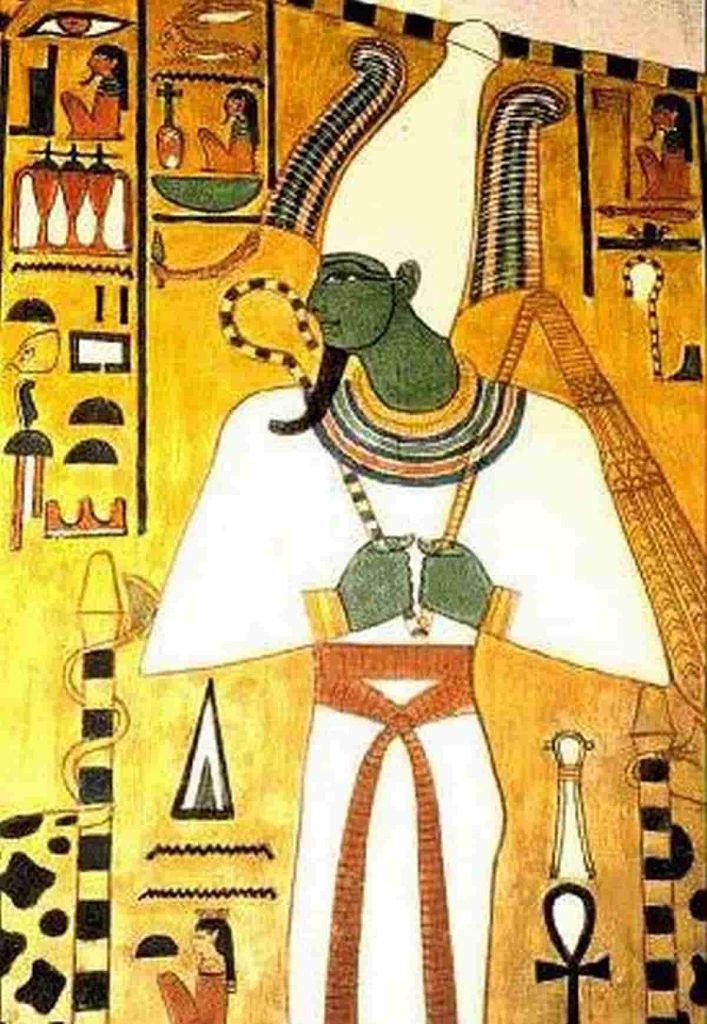
5. Ra’s Journey Through the Underworld
Ra’s Journey Through the Underworld is truly the mightiest story in ancient Egyptian mythology. Every night, the sun god Ra—the most important god of Egypt—has to pass the dark realm of the underworld known as Duat. In this perilous journey, he confronts horrifying monsters and potent enemies, the chief of the latter being the great serpent Apophis, who stood for chaos and darkness. Ra defeats Apophis nightly to guarantee the sunrise.
The cycle of death and rebirth signified the eternal struggle of order against chaos in Egyptian thought. Along with the help of Isis and Thoth, and other gods and goddesses, the journey itself was full of danger. However, these battles performed by gods were more than heroic tales, for they were myths used to explain natural cycles and provided a spiritual meaning to people’s world.
The journey of Ra is one of the main stories of Egypt’s massive library of myths and legends. It portrays how the Egyptians saw life, death, and the afterlife. With the might and grandeur of these legends, we get glimpses of how deeply mythology shaped the culture, religion, and worldview of one of the most fascinating civilizations in history.
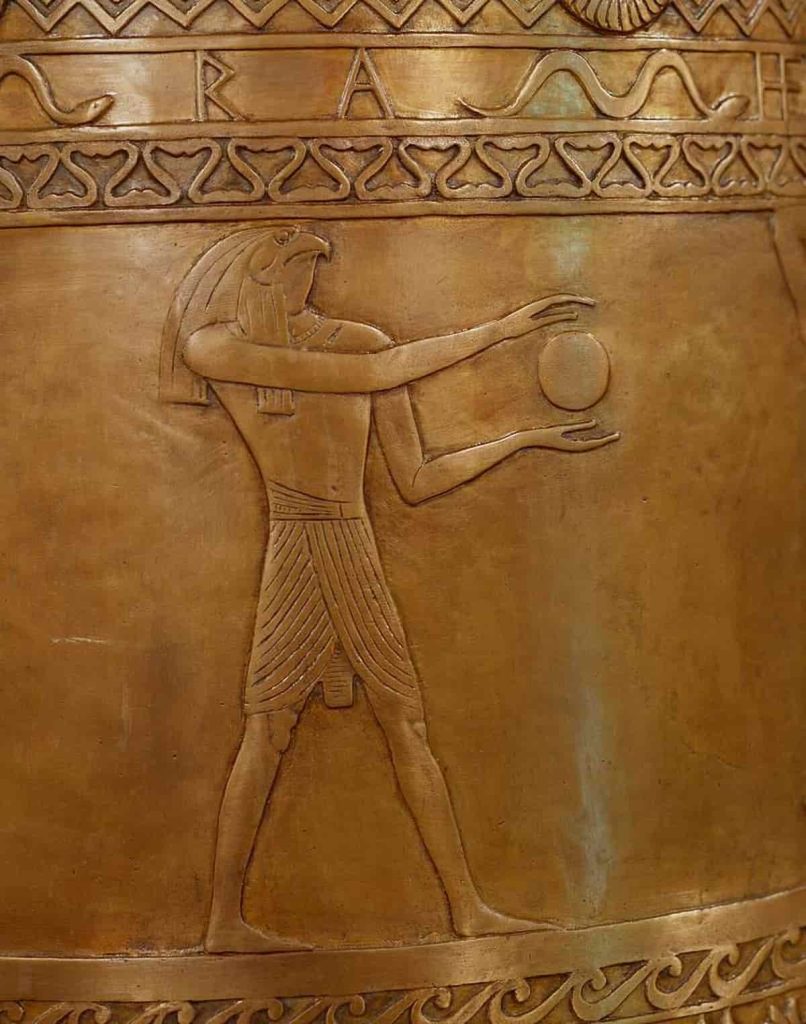
6. Who are the 42 in Egyptian mythology?
In ancient Egyptian mythology, “42” refers to the divine judges known as the 42 Assessors of Ma’at, responsible for much of the afterlife legislation. According to the ancient myths, after death and descent into the underworld, the soul of a human being is ushered into the Hall of Two Truths before Osiris. There follows a scene of weighing the heart against the feather of Ma’at, goddess of truth and justice. Thereafter, the soul would recite a “Negative Confession” to each of the 42 gods whereby they denied committing each sin. Each god represented a set of moral laws or values in ancient Egypt.
If the heart was found to be pure, the soul could enter into eternal bliss. Otherwise, Ammit, a soul-eating monster, swallowed the soul. These divine assessors indicate how deeply Egyptian legends were tied to ethics, law, and the cosmic order. These gods and goddesses were worshiped as spiritual enforcers of justice. This belief system is the greatest evidence of the power myths and mythology exerted over the everyday life of the ancient Egyptians, thereby making the 42 a powerful symbol of moral accountability in one of humanity’s richest spiritual legends.
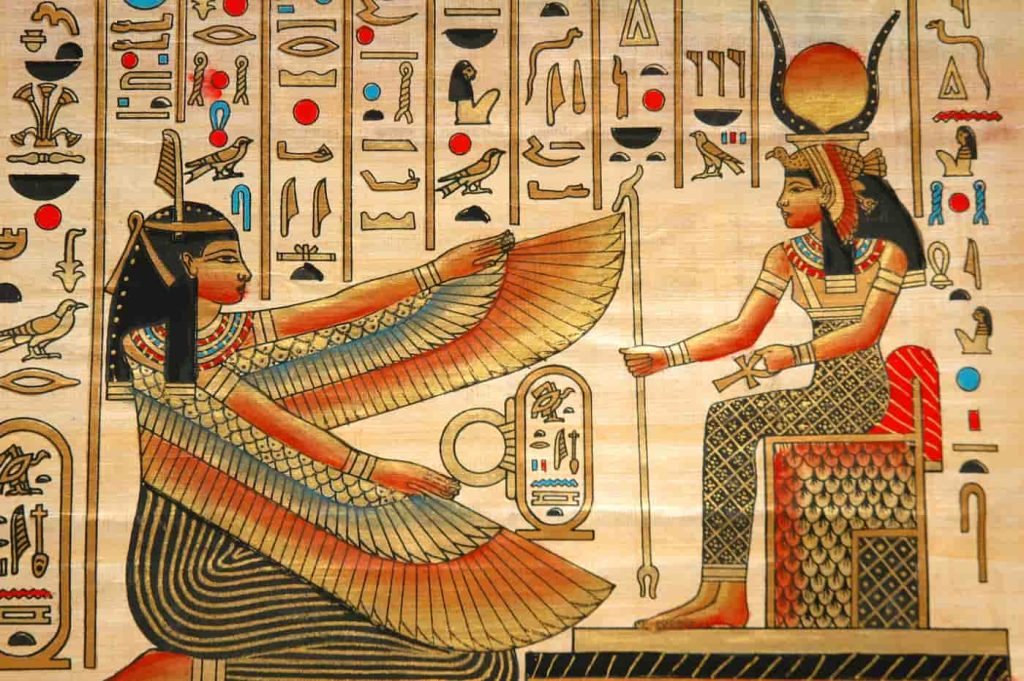
Ancient egyptian myths and believes
7. Who are the 42 in Egyptian mythology?
In ancient Egyptian mythology, “42” indicated the divine judges known as the 42 Assessors of Ma’at. Moreover, these gods presided over perhaps the most famous myth regarding the afterlife, The Weighing of the Heart. When a soul entered the Hall of Ma’at, it would be presented before the 42 gods and goddesses, each god representing some principle of justice, truth, or cosmic order. Furthermore, the deceased would then proceed with a “Negative Confession,” a denial of 42 sins, one sin and one denial for each divine assessor. Through this process, the moral purity of the individual could be ascertained before their heart would be weighed against the feather of Ma’at.
The soul would be made to walk eternally if the heart were lighter than a feather. But if the heart grew heavier than the feather, it would be swallowed by the monstrous Ammit. This ritual, then, deeply references the legends of balance, truth, and the conduct of proper life in ancient Egypt. These 42 judges are not just a symbol; they are a reflection of the close integration of law, spirituality, and life in Egyptian thought. The story of the 42 remains among the most intricately structured narratives existing in world mythology, bearing testimony to just how intricate and spiritually deep ancient Egypt and its pantheon of gods and goddesses were.
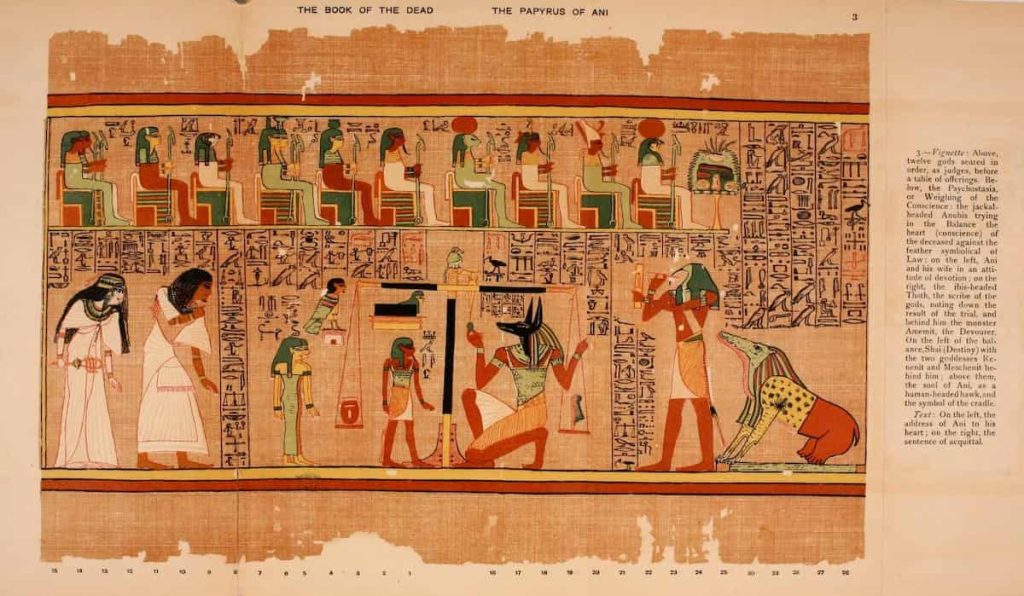
8. The Eye of Ra and the Destruction of Mankind
One of the most severe dramas brought forth by ancient Egyptian mythology is that of The Eye of Ra and the Destruction of Mankind, which goes down in the rich history of Egyptian mythology, illustrating the ferocity of the gods in action. In the story, mankind decided against the sun god Ra, who grew wrathful at their rebellion. When he wanted to punish them, he was said to have unleashed his fiery eye, sometimes personified by Sekhmet, the lion-headed goddess. As an expression of divine fury, Sekhmet started her rampage, annihilating mankind with no one able to stop her.
When they came to see the destruction before them, the gods were terrified at the scale of it. To give back the few that were left, Ra got Sekhmet so drunk with red-dyed beer that she thought that it was blood. After she drank, she got intoxicated and calm, thus saving the remaining few from total annihilation. This powerful Egyptian tale tells about concepts such as retribution, balance, and mercy, highlighting that goddesses had an option to be nurturers or avengers.
This story reflects how the ancient Egyptians conceived of divine power and maintained the fine balance between mortals and gods. It is one of the most fascinating legends from Egyptian mythology that reminds us of.
9. The Battle Between Horus and Set
Considered one of the most heartfelt tales in ancient Egyptian mythology. The battle between Horus and Set shall forever be ingrained in the annals of history with blood and drama, raging about betrayal and justice. After the noble king Osiris, one of the foremost gods of Egypt. That died with his evil brother Set as the cause, the falcon-headed Horus, son of Osiris and Isis, wrestled Set in a strange mixture of magical dueling and court trials for revenge and the rightful throne, representing the struggle between order and chaos: Horus embodies order, the opposite of what Set stands for. In a contest for many years with hardly a breath of difference between them, the two gods performed testing contests in strength, wit, and character.
The goddesses, above all Isis, come to the aid of Horus when it comes to tricking his uncle. Horus is recognized as the true king, sanctioning the divine right of the pharaohs, and this tale is not merely a myth but rather something ancient Egyptians associated with leadership, justice, and the juxtaposition of power. The battle between Horus and Set is one of the most famous stories in Egypt, imparting profound truths regarding the early culture, beliefs, and values of Egypt and its gods and goddesses.
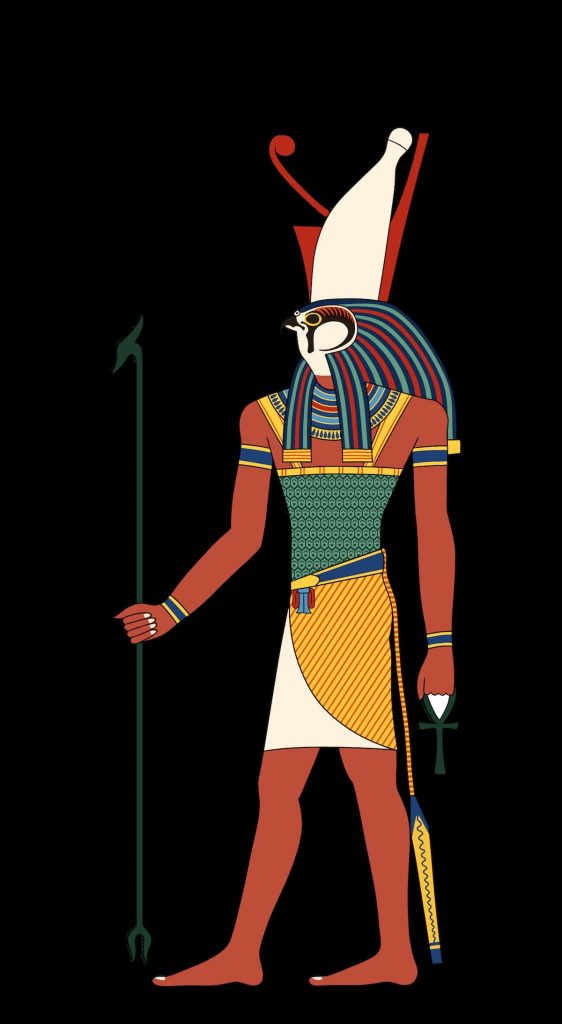
10. The Weighing of the Heart: Myth of the Afterlife
One of the most powerful stories in Egyptian mythology deals with the weighing of the heart. It is a process that decides the fate of a soul in the afterlife. Moreover, according to Egyptian myths, after death, the soul would enter the Hall of Ma’at. In order to sit in judgment before the gods and goddesses. Furthermore, the heart, supposedly carrying all the truth and emotion of the soul. It was weighed against the Feather of Ma’at, symbolizing truth and balance. If the heart weighed less than or equal to it. Then the soul was allowed to rest eternally in the Garden of Reeds. But if the heart was heavy with sin, Ammit, the one with a crocodile’s head and felt body of a lion with hindquarters of a hippopotamus, would devour it.
The myth, hence, symbolized that the Egyptian spirit had to pursue a life. That committed to truthfulness and righteousness to see the afterlife. Unlike many other cultures, where salvation is given alone by faith. Egyptian mythology required the soul to work for its place through this symbolic judgment wherein the gods reinforced the importance of truth and order, the primary facets that constitute Egypt’s spiritual and social fiber. Perhaps second only to the myth of Osiris, the Weighing of the Heart stands engraved in history. As an iconic scene in Egyptian mythology, thus highlighting the great association between Egypt, ethics, and eternity.
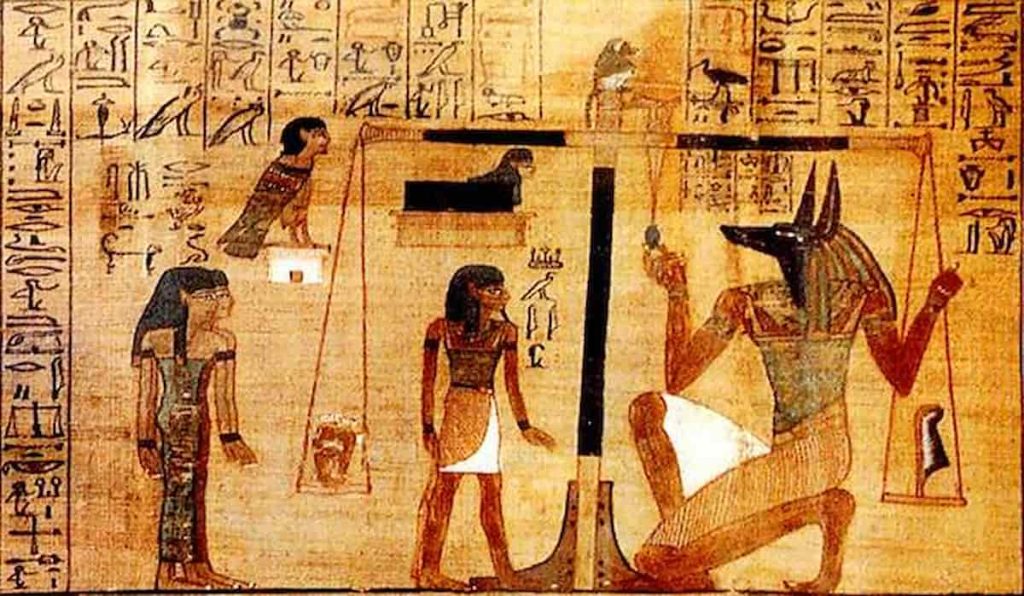
11. Symbols and Lessons in Egyptian Mythology
Symbols and Lessons in Egyptian Mythology reveal great wisdom behind ancient stories that nurtured Egyptian beliefs for some 5,000 years. In Egyptian mythology, every object, animal, and ritual carried with it a special symbolic meaning. For example, the scarab stood for rebirth, while the ankh stood for eternal life. These symbols were not mere art for art’s sake, but rather a bridge that connected our world with the divine. Through these huge mythic narratives, lessons were instilled in the ancient people regarding moral values. And that which must be maintained in balance is Ma’at: justice, truth. Stories of gods and goddesses such as Osiris, Horus, Isis, and Ma’at instilled the values of loyalty, vengeance, motherhood, and sacrifice into their culture.
These tales attempted to explain nature, death, and creation. Egyptian myths were more than mere amusement; they were a means toward educating and guiding people on how to behave in the present world and the afterlife. These very symbols and teachings of ancient Egypt sow a seed in the present day after having served as reminders about a culture that had mastered storytelling through mythology. Be it by the walls of temples or on the walls of tombs, the eternal truths of Egyptian legends still hold sway down through the ages.
12. Why Egyptian Myths Still Fascinate the World Today
The myths retain the attention of the world, in particular because they are rich in eternal themes. Divine drama and strange symbolism. These ancient stories are not mere tales; they form an arcane spiritual mythology that infiltrated Egyptian life in all its depths for thousands of years. From mighty gods like Ra, Osiris, and Anubis to loving goddesses like Isis and Ma’at, each represented real values, fears, and expectations. These myths spoke of creation, death, and birth in ways that continue to arouse wonder and curiosity.
The Egyptian myths are special in that they merged the earthly and the divine. Every flooding of the Nile, pharaoh‘s rule, and burial ritual found a reference to these ancient tales. Nowadays, people research Egyptian mythology not merely for historical consideration but also its spiritual perspective and moral directives. Every narrative captures a universal conflict: order against chaos, life against death, betrayal against loyalty—that is what keeps these stories relevant in our times.
Archaeologists are digging out newly discovered texts and temple carvings, and the enigma of Egypt’s past deepens. Hence, each Egyptian myth with its undying gods, wise goddesses, and eternal legends. Lastly, this still fascinates people around the world today.
13. Conclusion: What We Can Learn from Ancient Egyptian Myths
The ancient stories of Egypt are more than just entertaining legends. Moreover, they reflect the timeless truths about human nature, power, love, justice, and the cycle of life and death. Through these myths, we get information on how the ancient Egyptians understood the universe and their place in it. His goddess was not a distant character; they were present in daily life. Which affected everything from the rising sun to the flow of Indigo. These myths helped to discover a culture, respect for nature, and balance and harmony.
By studying the mythology of Egypt, we are reminded of the value of storytelling to preserve knowledge for generations. The story of Osiris learns about resurrection and justice, while RAS travels through darkness, motivating flexibility. Even today, these legends have shaped art, film, literature, and popular culture around the world. Whether you are fascinated by divine drama or this is a protective love for the goddess gear among the gods, there is always a meaningful lesson to apply.
Finally, the myths of Egypt show us that the struggles, hope, and belief in the ancient world are no different from ours. Their mythology remains a powerful mirror reflecting universal human values.

